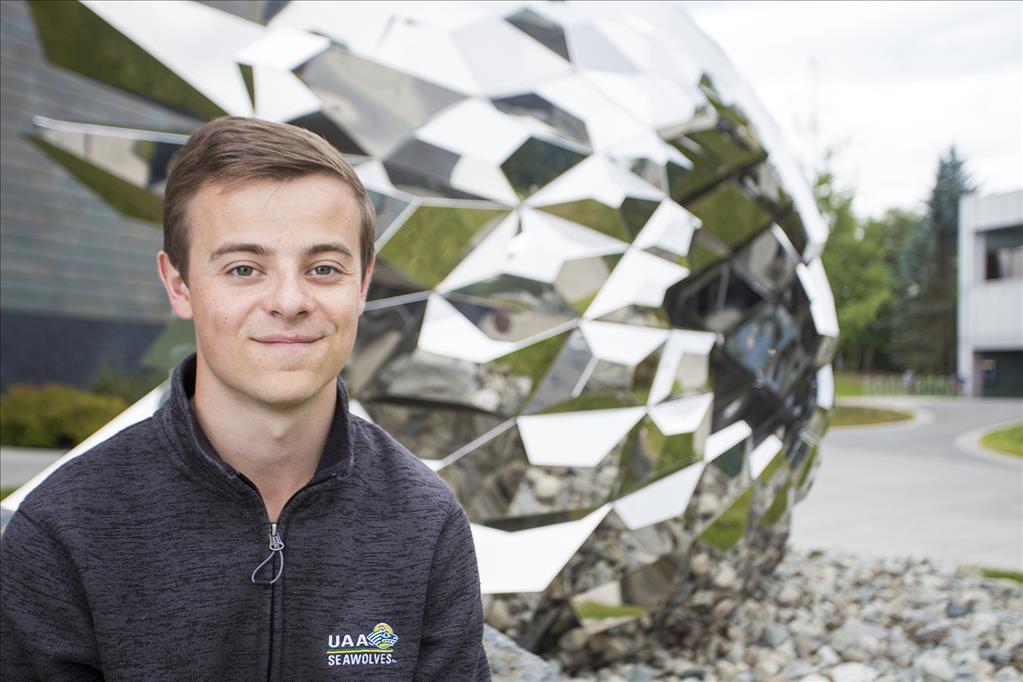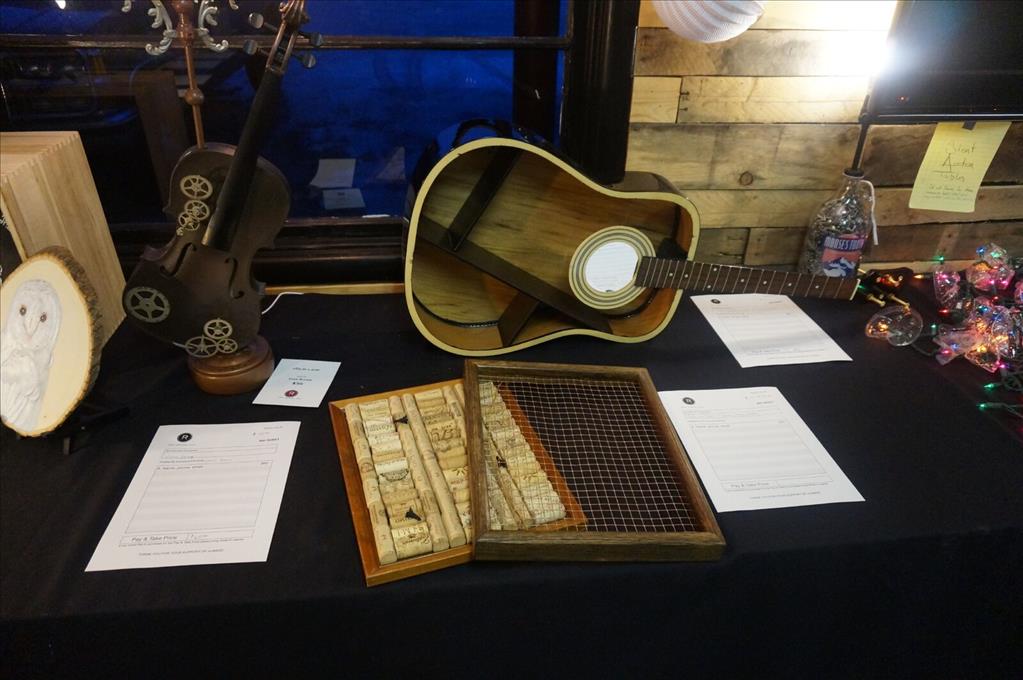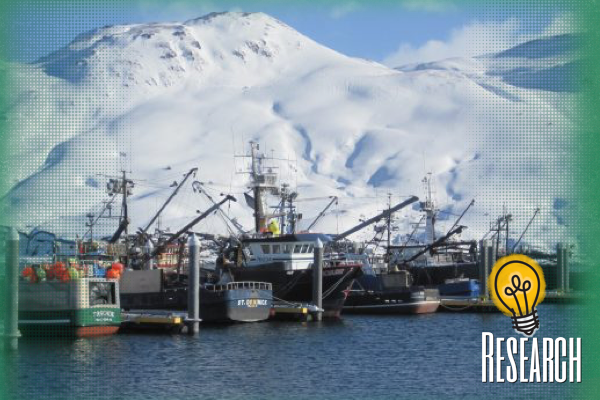NSF fellow: ‘I intend to educate and inspire others to better their communities’
by Tracy Kalytiak |
In rural Alaska, being able to use "Structural Insulated Panels" to build homes is a godsend. These SIPs - thin plywood slabs sandwiching a polyurethane core - are easy to use and easy to ship, saving time and money.

The National Science Foundation recently named Nathaniel Cox, a UAA civil engineering graduate student, as one of its fellows. Cox's research focuses on evaluating the suitability of structural insulated panels (SIPs) for construction of multi-span buildings (some SIPs can be seen in the photo, behind Cox). (Photo by Theodore Kincaid / University of Alaska Anchorage)
But how do SIPs behave when pressed under the weight of multi-span-building elements like a floor or roof? Do they remain stable, or does weight distort them, creating energy-wasting gaps that let costly heat ebb away?
Nathaniel Cox, a UAA civil engineering graduate and newly minted National Science Foundation graduate research fellow, will explore those questions over the next year. The remaining four years of his five-year fellowship will enable Cox to pursue his Ph.D. in engineering.
"I believe that engineering practices that adapt to the challenges of climate change and result in energy-efficient, cost-effective development are key to sustainable communities of the future," Cox stated in his NSF application. "As an NSF fellow, I intend to educate and inspire others to better their communities through intelligent and sustainable design."
Making life better in rural Alaska
Cox grew up in Anchorage, where he attended Chugach Optional and East High's School Within a School. His father, who worked for the U.S. Army Corps of Engineers, inspired him. So did his high school physics teacher, Bill Ennis, who ignited Cox's love for math, science, and engineering, and UAA's Dr. Larry Foster, who inspired Cox to pursue higher math and engineering studies - "Dr. Foster has been a huge influence in my academic career," Cox said.

Nathaniel Cox, a National Science Foundation fellow, is researching structural insulated panels (SIPs) with Dr. Scott Hamel as part of his master's degree studies at UAA. (Photo courtesy of Nathaniel Cox)
But Cox says his mother, Sally Russell Cox, a local government specialist with the Alaska Division of Community and Regional Affairs, has been an "incredible model for me to work toward," helping him see the impact he could make if he used what he learned to solve real-life dilemmas.
"For as long as she's worked for the state, she has talked about the projects and people she has worked with," he said. "Her passion for working with the villages has made me realize the conditions many Alaskans live in and consider how we can better conditions. It's been a lot of fun discussing the SIPs with her and hearing her thoughts about how they could benefit rural areas."
Thirty-one villages in Alaska face "imminent threat of destruction" from erosion and flooding,
Severe storms generated by climate change scour, erode and flood coastal villages, like Shishmaref, an Inupiat community of about 600 people that voted last year to relocate to the mainland from a quarter-mile-wide, 2.5-mile-long island. And Shaktoolik, located on a narrow spit of sand between Norton Sound and the Tagoomenik River.
Engineers estimate that another village, Newtok, is losing 70 feet of land per year to the Ninglick River; Newtok has already started moving its residents to a site 12 miles away.
Nathaniel Cox's mother works with all of these communities.
"She's definitely interested in [SIPs] and how they might be used for relocation efforts," he said. "I believe they have actually worked with R-Valued Homes' SIPs in the relocation of Newtok to Mertarvik." R-Valued Homes, Cox said, is providing the UAA research group with SIPs to test and is a local manufacturer of polyurethane/plywood SIPs.
Cox says Alaska communities, especially in rural areas, are like the so-called "canary in a coal mine" when it comes to issues of climate change, referring to rising temperatures, decrease in sea ice, and thawing permafrost, which contribute to coastal erosion and subsidence in remote locations.
"Civil engineering practices must adapt to meet these changing conditions," he said, "as well as the global need for proven engineering methods."
Sparking interest in engineering
Sustainable engineering practice and design is just one of Cox's passions. He also worked as a STEM program mentor, becoming involved in the student chapter of the American Society of Civil Engineers (ASCE) and captained its concrete canoe competition in 2014 before applying to be the K-12/STEM chair for the Younger Members Forum of the Anchorage ASCE and then being nominated (and accepting) the volunteer STEM coordinator position for UAA's College of Engineering alumni chapter.
In 2015, Cox helped coordinate efforts to shuttle nearly 200 Anchorage School District students on tours of the then-new Alaska Airlines Center, to help them learn about the project from the architects and engineers who created it. Then, Cox reached out to local engineering professionals in 2016, connecting them with high school students interested in the field and helping them learn how to achieve their goals.
Cox served as a mentor for the Dimond High School FIRST Tech Challenge robotics team, helping them understand basic mechanics and how to build a better frame for their robot.
"There is nothing more satisfying than seeing that sudden spark of understanding and excitement for applying a technical concept to achieve a desired result," Cox said.
As part of his undergraduate senior design project, Cox was chosen to take part in a community-service project: designing a new snow-disposal facility for the Fairview community that is similar to systems used in Hokkaido, Japan.
His group received the Alex Hills Engineering and Community Engagement Award, which they used to analyze soil conditions and evaluate expected design loads for an underground winter stormwater infiltration system.
Cox also worked with UAA Professor Scott Hamel on an undergraduate research project focused on devising a lightweight, affordable roof for structures in underdeveloped regions like Haiti, where, in 2010, a magnitude 7.0 quake collapsed or critically damaged more than 300,000 homes and left more than 316,000 people dead or missing.
He was later invited to present his findings to an audience of professional engineers at a UAA Professional Development Seminar.
"The positive comments I received...bolstered my confidence in my abilities as a researcher and STEM presenter," he said. "I was hooked, and knew I wanted to continue to research new ways to help developing communities."
Then, Cox was awarded an Alaska Space Grant Program Fellowship that enabled him to develop a new mortar mix design that could be applied to an extraterrestrial lunar environment.
"Completing this project helped me gain confidence in my abilities as a researcher, especially after a local newspaper article highlighted my work," he said. "It gave me a sense of pride to know that others appreciated my hard work."
After receiving his civil engineering bachelor's degree - summa cum laude, with a mathematics minor - he won a staff engineer position at a local engineering consulting firm. Cox then returned to UAA to work toward his master's degree in civil engineering.
Dr. Hamel asked Cox to take part in his new research project: evaluating structural insulated panels.
"This project emerged due to a lack of experimental data characterizing the structural properties of a stronger and more moisture-resistant plywood and polyurethane core assembly," he said.
The results of this project, Cox said, have great potential for significantly improving living conditions in rural Alaska due to reduced costs of construction, skilled labor requirements, transportation of materials, heating operations and improved housing design life.
"Here, I am delightfully immersed in my goal of addressing a challenge unique to sustainable development in Alaska," he said.
Written by Tracy Kalytiak, University of Alaska Anchorage
 "NSF fellow: ‘I intend to educate and inspire others to better their communities’" is licensed under a Creative Commons Attribution-NonCommercial 4.0 International License.
"NSF fellow: ‘I intend to educate and inspire others to better their communities’" is licensed under a Creative Commons Attribution-NonCommercial 4.0 International License.














